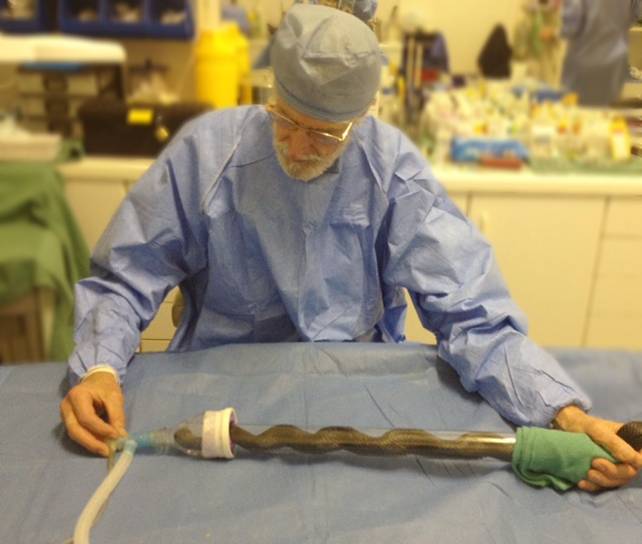October 11 - 17, 2015: Issue 235
Spring is a wonderful time of year! The flowers are blooming, cute baby animals are emerging, people are just happier! And Spring-time is when all our beautiful scaly creatures start getting active again.
Not everyone is a fan of snakes, but mostly because they are a very misunderstood species… They are essential to a healthy ecosystem. Without them we would be overrun with rodents and other pests. By keeping down the quantity of rodents, they reduce the occurrence of diseases carried by these and other pests.
General Behaviour:
• Contrary to popular belief, snakes are not out to ‘get us’ nor are they hiding and waiting to ambush us.
• They want nothing to do with us and tend to be shy and secretive.
• Their first line of defence is to slither away as fast as possible. If we continue to pester them, they give warnings, such as hissing and ‘neck-flattening’. If we still torment them, they might ‘strike’ or head-butt with a closed mouth. In the case of venomous snakes, if they do bite, it is often a ‘dry’ bite i.e. no venom is injected. Hospital statistics show that around 60% of patients submitted with snake bites turn out to have ‘dry’ bites.
• In pet-and-snake encounters, our domesticated pets are always the instigators. Snakes won’t attack dogs or cats but will defend themselves if pounced upon.
Interesting Snake Facts
• There are roughly 3,000 species of snakes in the world.
• Snakes are found on every continent except Antarctica (and New Zealand only has sea-snakes).
• Snakes have no eyelids.
• All snakes are carnivores.
• Snakes have flexible jaws that allow them to eat prey bigger than their head!
• Snakes ‘smell’ with their tongue.
• Snakes don’t have external ears.
• Snakes are mistakenly called ‘cold-blooded’. They are, in fact, ectothermic, which means that they rely on the outside environment for the temperature of their blood.
• Most snakes have no maternal instincts (with the exception of some pythons). Finding a baby snake does not mean that ‘the mother and father must be close-by’.
• Not all snakes lay eggs. Some give birth to live young e.g. red-bellied black snakes, death adders.
• An ‘expectant’ snake is referred to as being gravid, not pregnant.
• Most snakes are solitary animals and only get together during breeding season.
• Extreme fear of snakes is called Ophidiophobia.
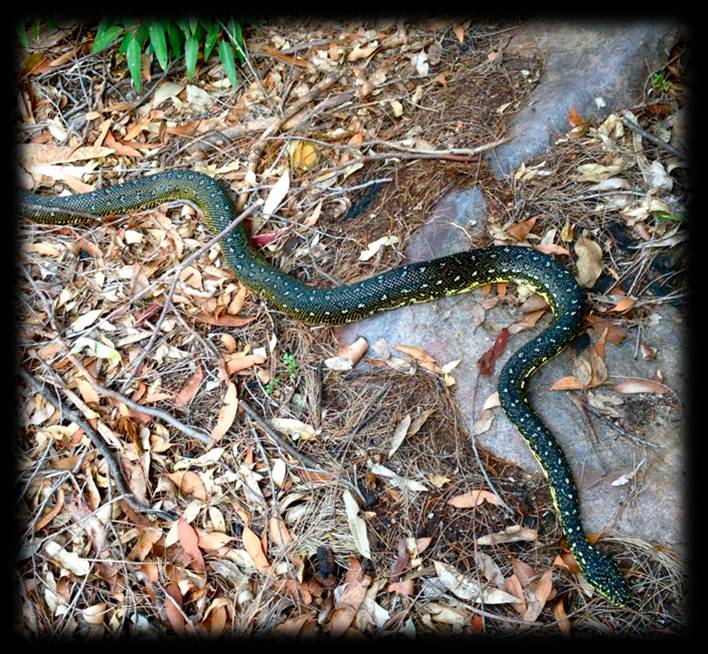
Diamond pythons are predominantly black in colour with yellow spots arranged in diamond-like shapes. The average adult size is between 2m and 3m.
Diamond pythons are typically placid in nature and reluctant to bite. They are mostly arboreal (tree-dwelling) but have been seen on roof-tops, curled up under trees or draped over fence-tops. They prey on rodents, lizards, birds and mammals such as possums. They are constrictors.
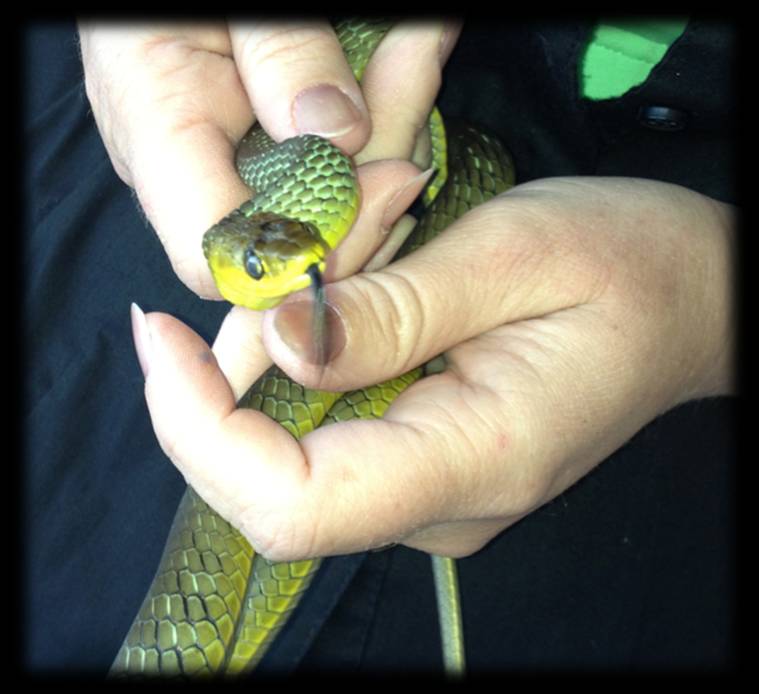
The Green Tree Snake is very slender, is greenish-blue on the body and bright yellow on the belly. They have big black eyes and a very long, thin, prehensile tail. They reach lengths of around 1.2m.
They are often seen on the ground which surprises people – given that they are tree snakes. They come to ground to prey on frogs, skinks and fish. Gorgeous little creatures!
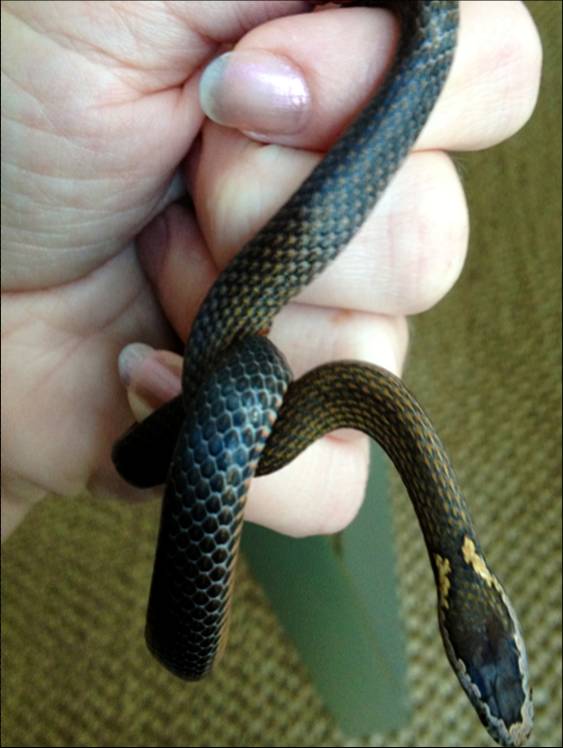
These little snakes are very secretive and are nocturnal so you’d be lucky to encounter one. They’re dark brown to grey in colour with a pink belly. They have a yellowish ‘halo’ or crown – hence their name. Golden-crowned snakes tend to reach lengths of between 50cm – 75cm. They feed predominantly on lizards and occasionally frogs.
They are wonderful little snakes but they often get into trouble when cats pounce on them and bring them inside.
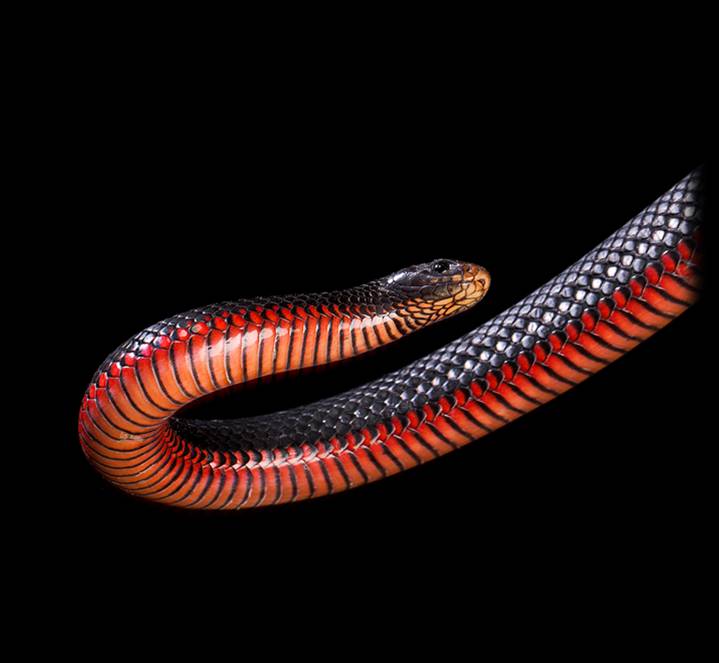
The Red-bellied Black Snake is a gorgeous glossy black on top and red on the lower sides and belly. The average-sized specimen is 1.2m - 1.5m. They are often found near water and are excellent swimmers! Their diet consists primarily of frogs.
They are not an aggressive species and their first form of defence is always to escape. They are often just moving through your property and should just be left alone.
How to Behave if you Encounter a Snake:
• Snakes love to lie out on warm surfaces, basking in the sun. You are most likely to encounter them on concrete walkways, on roads, on bush pathways or on warm rocks. Snakes will almost always slither away into the nearby bushes if they see or feel you approaching.
• If, however, they are asleep (which is hard for you to see as they don’t have eyelids to close) and don’t sense your approach – just stomp loudly from a good few metres away and they should awaken and slither away.
• NEVER poke them with a stick, or attempt to hit them with an implement, don’t step on them or do anything to enter their strike-zone. This is the only time they will become defensive and possibly strike.
What to do if you are bitten:
Unless you are trying to catch a snake or kill it, you are unlikely to ever be bitten. However, in the unlikely event that you are, follow these 3 easy steps:
• Do NOT wash the area of the bite – the hospital will take a swab at the bite site for the Venom Detection Kit (VDK).
• Use a compression bandage at the bite site and then bandage all the way up the limb and down again.
• Sit down – don’t panic – and call an ambulance.
Never apply a torniquet!
There is no need to identify the snake. The Venom Detection Kit in the hospital will process the venom from the swab and identify which antivenom is required.
60% of snake-bites are ‘dry’ bites i.e. no venom is injected.
What to do if a Snake enters your Home or Property:
1. Do not panic
2. Keep people, children and pets away from the snake
3. If the snake is outside, keep an eye on it and call for advice
4. If the snake is in a room, close the door to that room and call Sydney Wildlife
Snakes have every right to be here and should be treated with respect.
Do NOT attempt to kill ANY snake!!! It is illegal and dangerous. Generally, a snake will only become defensive if it is threatened. Leave them and they will tend to move off of their own accord. Or call Sydney Wildlife to have the animal relocated.
Southern Cross Wildlife Care’s Dr Howard Ralph will treat any injured snake – venomous or non-venomous.
